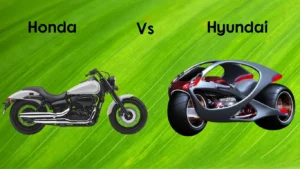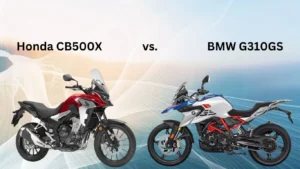As our roads become increasingly busy, the question of safety isn’t a negligible one. The debate over safe transportation modes, especially between cars and motorcycles, frequently surfaces. This article is an attempt to delve deep into this conversation, examining the safety aspects of these two modes of personal transportation. Combining statistics, evaluating safety features, and scrutinizing the impact of driver errors, we aim to provide you with a comprehensive understanding of the risks involved.
We’ll put the safety features of both cars and motorcycles under the microscope, examine the sobering reality of accident statistics, and delve into the human factor’s role, where driver error often plays a significant role. Furthermore, we’ll explore how pioneering technologies are paving the way for increased safety on our roads. This detailed comparison should help you make informed decisions and encourage safer practices on the road.
“An investment in knowledge pays the best interest.” – Benjamin Franklin
So, let us begin this enlightening journey, equipping ourselves with potentially life-saving information and ultimately making our roads a safer place for everyone.
Exploring the Myth: Are Motorcycles Really Safer than Cars?
The question of whether motorcycles are truly safer than cars has long been a topic of contention among riders, drivers, and safety advocates alike. Indeed, this issue is far from black-and-white, with both motorcycles and cars having unique advantages and challenges when it comes to safety.
Today, we’ll put this question under the microscope, providing an evidence-based analysis to shed light on this complex matter.
Riding vs Driving: The Fundamental Differences
Motorcycles and cars inherently have very different safety dynamics, largely due to their design and how they are operated.
A rider’s exposure to the environment, less visibility, and the need to balance add risks to riding a motorcycle that are not present when driving a car.
The Motorcycle Rider: Increased Vulnerability
A motorcyclist lacks the safety buffers a car provides. Most notably, there’s no protective shell to shield riders from a direct impact, unlike in cars, where drivers and passengers are enclosed within the sturdy confines of the vehicle.
The Car Driver: Protected but Not Invincible
While cars provide a greater level of physical security than motorcycles, they’re not without their risks. Collisions can still lead to severe injuries or even death, particularly in high-speed accidents.
Visibility and Stability: Motorcycle Riders’ and Car Drivers’ Challenges
Each mode of transportation offers unique challenges. For motorcycles, visibility and stability are critical issues. Cars, on the other hand, struggle with larger blind spots and longer stopping distances.
Motorcycles: Invisibility on The Road
Motorcyclists often deal with the issue of ‘invisibility’ on the roads. Their smaller size makes them less visible to other vehicles, causing motorcyclists to face a higher risk of being in a crash, especially in heavy traffic conditions.
Cars: Blind Spots and Stopping Distances
Cars have their own sets of challenges. Blind spots are a significant concern, and larger vehicles like SUVs and trucks are notorious for this. Also, cars, being heavier, have much longer stopping distances compared to bikes.
Data Fit: Motorcycle versus Car Accidents
We’re stepping away from theoretical conclusions and delving into hard-hitting data to provide an unbiased comparison of motorcycle and car safety.
Facts and Figures: Motorcycle Risks
According to the National Highway Traffic Safety Administration (NHTSA), a motorcyclist was 28 times more likely than a passenger car occupant to die in a crash per vehicle mile traveled in 2016.
By the Numbers: Car Safety
On the flip side, car passengers are not invincible. The NHTSA also reports that 638 car occupants still died per day due to motor vehicle crashes in the same year (2016).
As you sift through this information, the key takeaway is that every mode of transportation has inherent risks. Awareness, understanding, and adequate safety measures can significantly reduce the severity and incidence of accidents, regardless of whether you’re in the saddle or behind the wheel.
Also read: KTM vs. Suzuki: The Ultimate Off-road Showdown – Choose Your Ride!
Behind the Wheel: An In-Depth Analysis of Car Safety Features
When you get behind the wheel of a modern car, you’re stepping into a hub of advanced safety technologies designed to protect you, your passengers, and other road users. Each feature plays a crucial role in mitigating the risks associated with driving. Let’s delve deeper into some of the key car safety features and examine how they contribute to ensuring a safe ride.
From passive safety features like airbags and seat belts to active safety systems such as Electronic Stability Control (ESC) and Autonomous Emergency Braking (AEB), the intricate world of car safety is constantly evolving. This discussion will focus on exploring these features in detail, helping you understand their workings and benefits.
Passive Safety Features: The First Line of Defense
Passive safety features in a car are designed to protect occupants during an impact. These include structures designed to absorb and distribute impact forces away from vehicle occupants, as well as systems designed to keep occupants in place during a collision.
Airbags
Airbags, sometimes referred to as Supplementary Restraint Systems (SRS), form a critical part of a car’s safety arsenal. Deploying in mere milliseconds upon collision, these cushion-like devices reduce the impact suffered by vehicle occupants. Today’s cars usually come with several airbags, positioned strategically to help protect the head, chest, and lower body in various collision situations.
Seat Belts
Often considered the simplest and most effective line of defense, seat belts are designed to keep you anchored to your seat and prevent injury due to high-speed crash forces. Modern seat belts not only offer adjustable tightness for added comfort but also can activate pre-tensioners in the event of a collision to snugly secure the wearer.
Active Safety Features: Proactive Risk Management
Active safety features are technical marvels designed to prevent accidents through real-time monitoring and response. These technologies work tirelessly to ensure the driver maintains control of the car in varying situations and conditions.
Electronic Stability Control (ESC)
This system helps drivers maintain control of the car when entering a skid or when experiencing dangerous understeer or oversteer situations. By sensing the car’s direction and the driver’s intended direction, it can apply specific brake pressure to individual wheels to help guide the car back on track.
Autonomous Emergency Braking (AEB)
Designed to assist in preventing collisions, AEB uses sensors to identify potential obstacles. If the system detects a rapid closing speed between your car and the object, it can initiate braking autonomously, reducing the risk of a crash, or at least minimizing its severity.
Airbags offer multi-directional protection. Seat belts have adjustable tightness and pre-tensioners. The Electronic Stability Control (ESC) enhances stability, while the Autonomous Emergency Braking (AEB) helps avoid collisions.
Astride the Saddle: A Comprehensive Review of Motorcycle Safety Features
Motorcycles, while exhilarating, can pose significant safety challenges to riders. The onus of safeguarding one’s self significantly falls on the rider’s adherence to motorcycle safety norms and the inherent safety features of their bikes.
This section delves into motorcycle safety features, sheds some light onto their effectiveness and why they are indispensable for riders.
We’ll also cover how these features have evolved over time, enhancing the overall safety of motorcycle rides.
Anti-lock Brake System (ABS) in Motorcycles
The Anti-lock Brake System (ABS) is a critical motorcycle safety feature. When braking during an emergency, a rider may lock the wheels, leading to a loss of steering control and potentially an accident.
ABS prevents this by moderating brake pressure, facilitating safer stops. ABS has contributed significantly to reducing motorcycle accidents resulting from braking issues.
Traction Control System
A Traction Control System (TCS) increases motorcycle safety by improving handling and stability. By monitoring and adjusting the torque to the wheels, it prevents them from spinning uncontrollably during acceleration, ensuring better road grip and less likelihood of skidding.
Modern motorcycles often come equipped with TCS, adding an extra layer of protection for riders.
Advanced Aerodynamic Design
The design of a motorcycle, particularly its aerodynamics, contributes both to performance and safety. Bikes with superior aerodynamic design allow for better wind resistance and, hence, improved stability at high speeds.
Given their exposure, riders of motorcycles with advanced aerodynamic designs are less likely to lose control due to wind gusts or harsh weather conditions.
Hazard Light System
A hazard light system is a crucial safety feature for motorcyclists. When activated, it warns other road users, helping them spot the motorcycle from afar, particularly in low-visibility conditions.
Visibility is a key concern for motorcycles since their smaller size makes them less noticeable on the road than cars, increasing the risk of accidents, especially at night.
- ABS improves brake control and decreases stoppage time.
- TCS ensures better handling and stability during acceleration.
- Advanced aerodynamic designs offer higher resistance to wind gusts.
- Hazard lights increase visibility, alerting other road users of the motorcycle’s presence.
The Shocking Reality: Statistical Overview of Motorcycle and Car Accidents
Since we’re diving into the safety aspects of motorcycles and cars, we can’t overlook the pure, hard data. Accidents are an unfortunate reality on the road, and understanding the risks can help us make safer choices.
So, in the spirit of making informed decisions, let’s take a closer look at the accident statistics for motorcycles and cars. It’s not all grim, either, as we’ll pepper in some hopeful statistics showing how advancements in technology and safety regulations are making a difference.
Just beneath the surface of the broad accident statistics, you’ll find striking differences. One might say that these disparities shed light on the unique challenges and risks associated with each mode of transportation.
That’s right—you’re not just looking at bare numbers, but a story of how these vehicles fare in the real world. Now, fasten your seatbelt or strap on your helmet, and let’s get started.
Motorcycle Accidents: A Tale of High Risks and High Stakes
Whether you’re a seasoned rider or just a casual observer, one fact stands out: motorcycles come with a noticeably higher risk factor.
Let’s dig deeper into these statistics, as understanding them may shape the way you approach bike safety.
Statistics on Fatalities
According to the National Highway Traffic Safety Administration (NHTSA), your chances of dying in a motorcycle accident are remarkably higher compared to car accidents.
This data table is a potent reminder of the increased risk.
| Year | Motorcycle Accident Fatalities | Car Accident Fatalities |
|---|---|---|
| 2019 | 5,014 | 36,096 |
| 2018 | 4,985 | 36,560 |
Head Injuries and Helmet Use
Head injuries stand as the most common, yet preventable, cause of fatalities among motorcyclists. This statistic underscores the importance of proper helmet use—unfortunately, not everyone heeds this advice. Our data reveals the connection.
- In an estimated 37% of fatal motorcycle crashes, the rider was not wearing a helmet.
- Helmet usage reduces the risk of death by 37% and the risk of head injury by 69%.
Car Accidents: A Balance of Numbers and Safety Features
Despite the lower fatality rate, it’s important to remember that car-related accidents still account for a significant portion of overall traffic accidents. Let’s explore these numbers to appreciate the comprehensive safety features inherent in cars.
Statistics on Fatalities
The NHTSA data reveals an interesting trend: despite the higher number of reported car incidents, the fatality rate remains comparatively low.
| Year | Car Accident Incidents | Car Accident Fatalities |
|---|---|---|
| 2019 | 6.75 million | 36,096 |
| 2018 | 6.73 million | 36,560 |
Role of Safety Equipment
While the responsible use of seat belts, airbags, and other safety features has a clear impact on car safety, there’s another aspect to consider—the impact of newer technologies like driver-assistant systems.
- Seat belts saved an estimated 14,955 lives in 2017.
- Advanced driver-assistance systems have the potential to prevent over 2.7 million crashes every year.
Also read: Triumph vs. Royal Enfield: A British Motorcycle Brand Stand-off
Human Factor: The Role of Driver Error in Accidents
While the role of car and motorcycle safety features in preventing accidents cannot be understated, it’s crucial to realize that the biggest factor in most accidents is human error. Irrespective of whether you’re clutching the handlebars of a motorcycle or holding the steering wheel of a car, your actions have a direct influence on your safety and those sharing the road.
It’s alarming that according to reports from the National Highway Traffic Safety Administration, more than 90% of road accidents are primarily due to driver error. This statistic underlines the importance of fostering safe driving habits and staying vigilant on the road.
Understanding and Minimizing Driver Error
Driver error falls into several categories, each contributing differently to road accidents. By identifying and understanding these, we can translate this knowledge into safer road experiences.
Distraction and Inattention
Whether you’re cruising in your car or sprinting on your bike, paying undivided attention to the road is paramount.
As per a NHTSA report, 25% of accidents result from a lack of attention. These include distractions like texting while driving, fiddling with the radio, or daydreaming.
DUI (Driving Under Influence)
No safety feature or gear can adequately protect drivers under the influence of drugs or alcohol. The CDC reports that every day, 29 people in the U.S. die in motor vehicle crashes involving an alcohol-impaired driver.
This translates to one death every 50 minutes, emphasizing the need for sober road usage.
Speeding and Overconfidence
The thrill of speed can sometimes blind us to the inherent dangers it poses. Overconfidence in one’s driving skills can lead to reckless maneuvers and accidents. The NHTSA’s report states that almost a third of all fatal car accidents involved speeding.
Error-Prone Situations for Car and Motorbike Drivers
Certain situations can increase the propensity for driver errors for both car and motorcycle enthusiasts. Awareness of these contexts can be the key to preventing unnecessary mishaps.
Traffic Density and Road Rage
Traffic congestion often leads to impatient driving practices like tailgating, lane splitting, or aggressive maneuvers, increasing the risk of accidents.
Studies have shown a rise in road rage incidents, particularly in dense traffic situations.
Night Driving and Poor Weather Conditions
Driving in reduced visibility, be it at night or under harsh weather conditions, requires heightened caution. Unfavorable weather like heavy rain can drastically reduce tire grip, compromising both car and motorcycle stability.
Understanding the correlation between driver error and road accidents can pave the way towards safer and more responsible practices, whether on two wheels or four. Remember, the key to getting safely from A to B resides largely in your hands.
Advanced Technologies: How Modern Innovations Are Enhancing Safety
The world of transportation is evolving at a rapid pace, with new technologies introduced almost on a daily basis to enhance the safety of both motorcyclists and car drivers.
These advancements serve as an adjunct to the existing safety features, complementing them to achieve a higher degree of accident prevention and injury mitigation. Here, we will delve into these cutting-edge advances and their impact on motorcycle and car safety.
We should appreciate the fact that such innovations also promote safer driving habits, urging us to be more vigilant and conscientious. Although perfectly safe transportation hasn’t yet been achieved, it’s no longer relegated to the realm of science fiction, thanks to these ground-breaking interventions.
Autonomous Driving Technologies
Autonomous driving technologies aren’t just exciting because of their potential to disrupt the conventional approach to driving; they’re also promising in the context of safety. This combines various technologies, such as computer vision, machine learning, and sensor fusion, to create vehicles that can sense the environment and navigate with minimal human input.
- Advanced Driver Assistance Systems (ADAS). From Blind Spot Detection to Forward Collision Warning and Lane Keeping Assist, ADAS constitutes safety features that aid drivers in driving and parking functions, reducing the human errors to a large extent.
- Autonomous Vehicles. Self-driving cars, while still not widely available, represent the zenith of vehicular safety. By completely eliminating the human factor, autonomous vehicles have the potential to drastically reduce accidents caused by human error.
Vehicle-to-Vehicle (V2V) and Vehicle-to-Infrastructure (V2I) Communication
The National Highway Traffic Safety Administration (NHTSA) has begun taking steps toward enabling V2V and V2I communication, which are expected to revolutionize traffic safety.
By allowing vehicles to share information such as speed and direction, as well as alerting to potential issues ahead, these communication technologies could dramatically decrease vehicle accident rates.
- V2V: Vehicles share speed, direction, and position data, among other pieces of information. This allows vehicles to predict potential collisions and alert drivers, or even take evasive action autonomously.
- V2I: Vehicles can communicate with traffic lights, road signs, and other pieces of infrastructure. This could result in efficient navigation, fewer traffic jams, and fewer accidents.
Virtual Reality for Enhanced Driver Training
This immersive technology has spread its wings beyond gaming and media, entering the realms of driver education and training. The benefits of such training, particularly for new and inexperienced drivers, are enormous.
VR technology is capable of simulating various extreme driving conditions, phasing in unpredicted obstacles or hazards, at a much lower risk than real-life driver training. Consequently, it bolsters the skills and reflexes of both motorcyclists and car operators, preparing them for a serene driving experience.
- Various Real-life Scenarios: VR training includes situations like rain, snow, poor visibility, pedestrian crossing, and so on. This helps drivers handle any possible real-life situations.
- Instant Feedback: Crucial for learning, VR-based trainings provide instant feedback helping learners rectify their mistakes immediately.
Conclusion
In our comprehensive comparison, we’ve highlighted the inherent risks and safety measures associated with both motorcycles and cars. It’s evident that while motorcycles may offer an exhilarating experience, they also come with a higher risk. Cars, on the other hand, generally offer more protective features, reducing the potential for serious injuries.
However, it is crucial to remember safety largely revolves around the user’s actions and maintenance of these vehicles. By minimizing driver errors and utilizing available safety features, everyone can contribute to safer road conditions, be it on four wheels or two. Stay safe and keep the roads safe for others as well.






